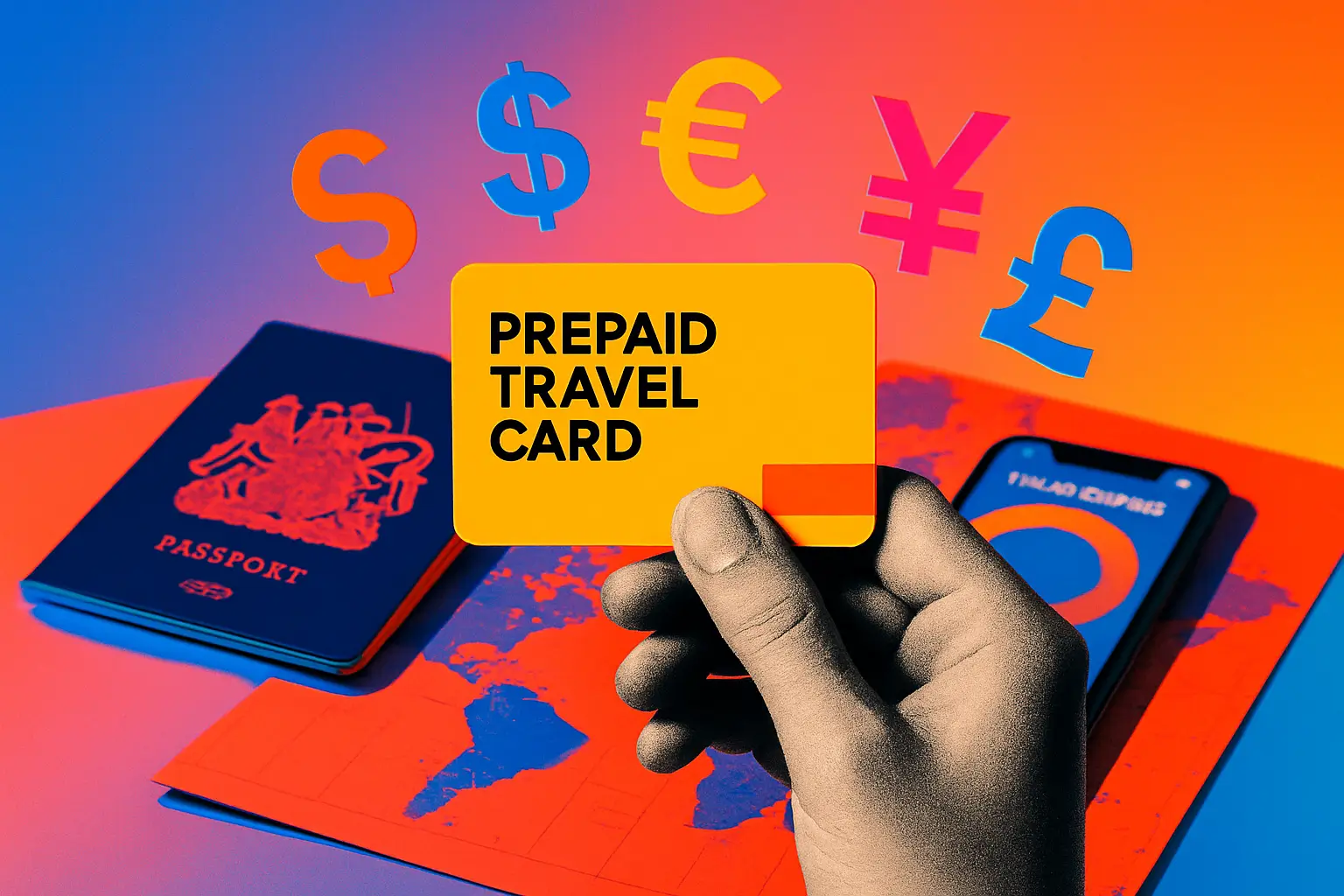Prepaid travel cards FX products explained: what it is and how it works
Learn how UK prepaid travel cards work in 2025, compare options, costs, protections, and limits, and decide if they suit your next trip abroad.
Your travel money, controlled and contactless in 2025
Prepaid travel cards let you load pounds and spend abroad in local currencies, typically without fees on purchases. You get chip and PIN security, app controls, and contactless convenience with clear budgeting boundaries.
Who should consider a prepaid travel card
If you want to ring-fence your holiday budget, avoid debt, and track spending in real time, a prepaid card fits. UK travellers visiting one or several countries benefit from multi-currency wallets, while those with thin or poor credit histories appreciate no credit check lending risk.
Key concepts to know before you choose
- Prepaid vs debit vs credit: Prepaid cards are not linked to your current account and do not offer borrowing. They help you spend only what you load. Debit cards draw from your bank balance. Credit cards provide credit and may add protections like Section 75 on eligible purchases.
- Currency types: Cards come as single-currency, multi-currency, or sterling-only. Single-currency can lock an exchange rate before travel. Multi-currency holds several wallets at once. Sterling-only converts pounds at the point of use.
- Protections and safeguards: Funds are usually held in ring-fenced accounts with safeguarding rules. These cards are not covered by the Financial Services Compensation Scheme. Large long-term balances are not advisable.
- Acceptance and limitations: Widely accepted in shops, restaurants, and ATMs worldwide. Pre-authorised transactions such as car hire or hotel deposits can be declined. Some providers set ATM withdrawal limits and inactivity fees.
- Controls and security: Most cards offer chip and PIN, contactless, instant freeze in the app, and real-time spending alerts. Top-ups can be done online, via bank transfer, or in-app while abroad.
Understanding APR is less relevant here. What matters is the exchange rate, fees, and the protections you do or do not have.
Choosing between card types
Different card structures suit different trips. Here is how they compare.
The main options at a glance
| Card type | Best for | Exchange handling | Typical strengths | Common limitations |
|---|---|---|---|---|
| Single-currency | One-country trips | Lock rate when you load | Predictable budgeting, simple | Poor if itinerary changes, extra card for new currency |
| Multi-currency | Multi-country itineraries | Hold several wallets | Flexible switching, app controls | More settings to manage, possible wallet-to-wallet fees |
| Sterling-based | Infrequent travel | Converts at point of spend | Simple setup, one balance | Live rate exposure, potential FX mark-up |
Real-world fit
- Europe road trip or multi-city business travel: Multi-currency card makes sense, letting you switch between euros and US dollars in one app.
- Single destination holiday: A euro-only or dollar-only card suits, especially if you want to lock a rate ahead of time.
- Occasional traveller: A sterling-based card trades simplicity for rate variability, fine for light, ad-hoc use.
Shortlist well-known UK providers with transparent exchange mark-ups, clear ATM policies, and app-based controls like instant freeze and spend notifications.
Costs, impact, and the risks to watch
- Spending fees: Many providers charge no fee on card purchases abroad. Check the FX rate and any mark-up on conversion.
- ATM withdrawals: Provider ATM fees may be low or zero, but machines or networks can charge their own fees. Withdrawal limits and minimum amounts often apply.
- Top-up and inactivity: Look for free bank transfer top-ups and avoid cards that charge for inactivity if you travel rarely.
- Protections: Money is safeguarded in ring-fenced accounts but is not covered by the Financial Services Compensation Scheme. Avoid storing large sums for long periods.
- Consumer rights: Prepaid cards do not provide Section 75 protection. For large purchases, a specialist travel credit card might be safer.
The impact for most UK travellers is clearer budgeting and lower risk of overspending. The trade-off is stricter limits and fewer legal protections than some credit products.
Eligibility and setup in the UK
- Basic requirements: Typically aged 18+, UK resident, and able to pass identity checks. Some providers offer youth or teen cards linked to a parent account.
- Credit checks: Full credit checks are not usually required because you are not borrowing. Affordability is defined by your own top-ups.
- Loading methods: Bank transfer, debit card top-ups, online banking, or employer funding for business travel. Many allow instant top-ups in-app.
- Limits: Daily or monthly top-up and ATM limits apply. Some cards set maximum total balance caps for safeguarding and risk control.
- Access and controls: Most apps provide freeze, unfreeze, and spend caps per currency, plus travel notifications.
If you need Section 75 protection or larger ATM withdrawals, consider a mix of payment methods.
From sign-up to spend in eight steps
- Compare fees, FX mark-ups, and limits across providers.
- Apply online and complete identity verification checks.
- Receive the card and activate it in the app.
- Choose currency wallets or keep a sterling balance.
- Top up via bank transfer or debit card.
- Set spend limits and enable instant notifications.
- Tap to pay or use chip and PIN abroad.
- Withdraw cash only when necessary and track balances.
Pros, cons, and practical trade-offs
- Pros: Budget control, no overdraft risk, contactless convenience, multi-currency flexibility, strong app security, accessible without strong credit history.
- Cons: No FSCS cover, no Section 75 protection, ATM limits and potential fees, weaker acceptance for hotel deposits and car hire, possible FX mark-ups.
- Consider: Use for day-to-day spending, keep a backup credit card for deposits and major purchases, and hold only the funds you plan to spend soon.
Read this before you load your holiday money
- Keep balances modest due to lack of FSCS coverage, even though funds are ring-fenced.
- Check whether your itinerary needs multi-currency capability.
- Confirm ATM fees and minimum withdrawal amounts.
- Do not rely on a prepaid card for car hire or hotel pre-authorisations.
- Review the app’s freeze and notification features before you travel.
Always carry a secondary payment method in case a merchant refuses pre-authorisation on prepaid.
Alternatives worth comparing
| Option | Best use case | Key advantages | Key cautions |
|---|---|---|---|
| Travel credit card | Larger purchases, deposits | Strong purchase protection, near-market FX on some cards | Risk of interest if not repaid in full |
| High-street debit card | Simplicity | Familiar, broad acceptance | Possible non-sterling fees and higher ATM costs |
| Cash | Small local expenses | Universal acceptance | Loss or theft risk, poor rates if bought badly |
| Digital wallets | Contactless convenience | Tokenised security, quick pay | Depends on underlying card terms |
A blended approach often works best: prepaid for daily spend, credit for protection, and a little cash for tips and taxis.
Frequently asked questions
Are prepaid travel cards safe to use abroad?
They include chip and PIN, contactless limits, and instant freeze via apps. Funds are safeguarded in ring-fenced accounts. They are not covered by the Financial Services Compensation Scheme, so avoid large idle balances.
Do they charge fees when I spend?
Many do not charge for overseas card purchases. Costs usually arise from FX mark-ups, ATM withdrawals, inactivity, or certain top-up methods. Always check your provider’s tariff.
Can I use one card across multiple countries?
Yes, with a multi-currency card. You can hold several currencies and switch within the app, useful for itineraries spanning Europe and the United States.
Will a prepaid card work for car hire or hotels?
Often not for pre-authorised deposits. Carry a credit card for these transactions and use your prepaid card for everyday spending.
What happens if my provider fails?
Customer funds are normally held in ring-fenced accounts at banks or building societies. FSCS protection does not apply to prepaid balances. Keep balances to what you plan to spend soon.
Can I top up while travelling?
Yes. UK cards typically support bank transfer or in-app top-ups, letting you reload from abroad and track spending in real time.
What to do next
- Decide which card type fits your trip and risk tolerance.
- Compare two or three UK providers on FX pricing, ATM rules, and app controls.
- Order your card at least 7 to 10 days before departure.
- Test a small top-up and a tap payment locally before you fly.
Prepaid cards work best as part of a toolkit, alongside a backup credit card and a small cash float.
Important information
This article provides general guidance only and is not financial advice. Product terms vary by provider and can change. Check fees, exchange rates, and limits before applying. If you need personalised advice, consult a regulated adviser.
Get smarter with your money
Join thousands of people in the UK who are taking control of their financial future

FAQs
Common questions about managing your personal finances
Begin by tracking every expense for one month. Use an app or spreadsheet. No judgment. Just observe your spending patterns.
Cancel unused subscriptions. Cook at home. Compare utility providers. Small changes add up quickly.
Aim for 20% of your income. Start smaller if needed. Consistency matters more than the amount.
Choose reputable apps with strong security. Read reviews. Check privacy policies. Protect your financial data.
Pay bills on time. Keep credit card balances low. Check your credit report annually. Be patient.
Still have questions?
Our team is ready to help you navigate your financial journey
More financial insights
Explore our latest articles on personal finance and money management




